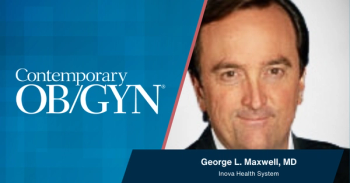
Maternal bed rest boosts growth in small for gestational age infants
A study found that 2 weeks of maternal bed rest significantly increases fetal weight and growth metrics in small for gestational age fetuses.
Fetal weight is increased among small for gestational age (SGA) infants after 2 weeks of bed rest, according to a recent study published in the American Journal of Obstetrics & Gynecology.1
Currently, the standard approach for managing SGA fetuses with an estimated fetal weight (EFW) under the tenth percentile is increased fetal surveillance. Data has also indicated an increase in maternal cardiac output and uterine blood flow from maternal rest in the left lateral position.
Multiple factors influence fetus’ size for gestational age, including neighborhood food envrionments.2 A 2023 study found increased SGA risk in neighborhood quartiles with higher densities of unhealthy food, vs decreased risk in quartiles with higher densities of healthy food.
According to investigators, optimal fetus management for SGA fetuses “represents a major clinical problem.”1 Maternal bed rest is currently not recommended for management.
To evaluate the impact of complete maternal rest on SGA fetuses, investigators conducted a retrospective longitudinal study. Study groups included a bed rest group and control groups.
An ultrasound database was used to identify fetuses with an EFW under the tenth percentile. Standard techniques were used to measure head circumference (HC), abdominal circumference (AC), and femur length (FL) in these fetuses before the SGA diagnosis, at the SGA diagnosis, and 2 weeks after prescribing bed rest.
Bed rest included lying on the left lateral recumbent position and avoiding the supine position while awake. Patients prescribed bed rest would take 5 to 10 minutes at the end of every hour of resting to walk, stretch, and attend to personal needs.
After 2 weeks of bed rest, patients underwent an ultrasound assessment to determine fetal growth. Verbal communication during follow-up was used to determine compliance toward the intervention.
Two control groups were developed, the first of which included patients at sea level while the second included patients at 5000 feet above sea level. An EFW under the tenth percentile was identified in these patients, but they were not asked to begin maternal rest.
The bed rest group included 265 patients. Of the 265 fetuses, 75% had an EFW above the tenth percentile following 2 weeks of maternal rest, with a median percentile increase from 6.8 to 18.
AC above the tenth percentile was reported in 17% of bed rest group fetuses at SGA diagnosis vs 67% after 2 weeks of maternal rest. These rates were 78% and 86%, respectively, for HC and 49% and 71%, respectively, for FL. Median percentiles after bed rest for AC, HC, and FL were 17, 33, and 18, respectively.
In the first control group, only 19% of 17 fetuses diagnosed with SGA became appropriate for gestational age following the diagnosis. In the second control group, this rate was 12%.
A 63% growth in the rate of EFW above the tenth percentile was reported following implementation of maternal bed rest. Nineteen percent of fetuses experienced growth of their EFW after maternal rest while remaining under the tenth percentile.
These results indicated increased growth of fetuses with an EFW under the tenth percentile through the use of maternal bed rest. Investigators recommended randomized studies to “examine the effect of various durations of rest to determine the fetal response.”
References
- DeVore GR, Polanco B, Lee W, et al. Maternal rest improves growth in small-for-gestational-age fetuses (<10th percentile). Am J Obstet Gynecol. 2025;232:118.e1-12. doi:10.1016/j.ajog.2024.04.024
- Krewson C. Neighborhood food environments and size for gestational age. Contemporary OB/GYN. June 22, 2023. Accessed January 23, 2025.
https://www.contemporaryobgyn.net/view/neighborhood-food-environments-and-size-for-gestational-age
Newsletter
Get the latest clinical updates, case studies, and expert commentary in obstetric and gynecologic care. Sign up now to stay informed.










